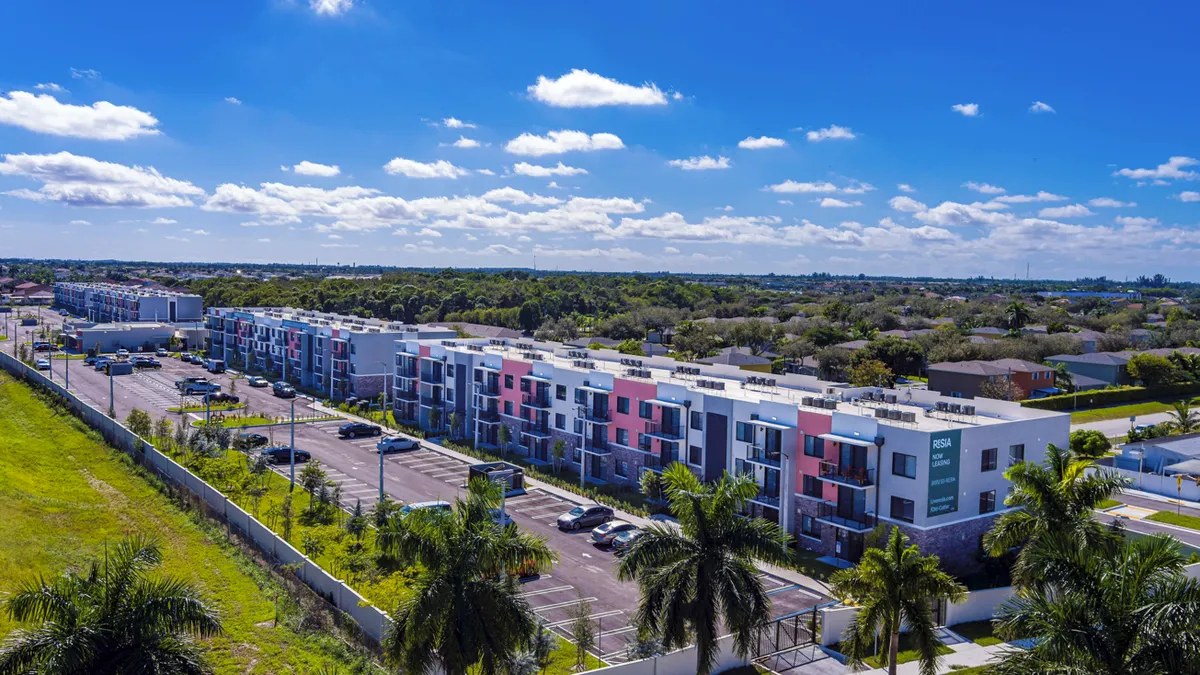There is no other rental market in the country quite like the New York City metro area. With a high percentage of rent control apartments, a large number of older properties and even long-entrenched private ownership groups, operators in the Big Apple face challenges that few others in the U.S. deal with on a daily basis.
Marc Pollack is used to navigating the obstacles of operating in and around the nation’s largest city.
Right now, the managing director for multifamily for the New York portfolio at Dania Beach, Florida-based property management firm FirstService Residential is focused on determining if there is some weakness in the market after a strong bounceback from the COVID-19-era doldrums.
“After an initial hit, where occupancy dropped to historical lows from what we're used to, we came back pretty strong and experienced two summers of historically strong rents and rent growth,” Pollack told Multifamily Dive.
The renters who were happy to be able to lease any apartment in New York City in 2022 and early 2023 can now be choosier as they approach renewal, according to Pollack.
“The market has softened a bit,” Pollack said. “But folks like me really need to see various data points before we’re in a position to concede the point.”
Here, Pollack talks with Multifamily Dive about the New York City market, the importance of customer experience and expense challenges.
This interview has been edited for brevity and clarity.
MULTIFAMILY DIVE: If the numbers do eventually show a slowdown in New York, what do you think is driving it?
MARC POLLACK: Conventional elements of seasonality are playing a factor, and the renters that came in at these higher rents in the rebound from COVID are now fully settled in and coming up on renewal.
I think there’s an element of competition where product differentiation is coming through. And things they didn’t care as much about in the residential experience when they were signing now matter more. So it’s creating a bit of a pickier customer.
How is rent control playing into issues in the area?
Rent regulation, the regulatory environment and the political climate are certainly some of the headwinds. Good cause eviction [which requires landlords to offer new leases to market-rate tenants] and the Housing Stability and Tenant Protection Act of 2019 and its domino effects have certainly been a major headwind to profitability for owners of multifamily products in our market.
What’s your operational focus this year?
As a management company, I like to preach the basics, which really come down to focusing on financials and managing expenses combined with a heavy emphasis on customer service and resident experience.

So, the big initiatives are around improving the resident experience — faster closeouts of work orders and faster response times to increase a higher standard of maintenance in the day-to-day operation of the physical product.
We're also optimizing the way we manage our common areas and amenities, with a hospitality focus and resident experience focus. But trying to do that in the environment where you're looking to manage expenses becomes the challenge for operators.
Then, on the back end, it's a focus on financials and having an account team that feels engaged and invested in the financial outcomes of our clients' properties. So that means having more training and development around financial management for our teams. And it means setting more specific and actionable goals around hitting expense targets.
Do you see expense increases abating in 2024?
Unfortunately, I think that inflation was only a partial driver of why construction costs and third-party service costs in our industry were rising. Other factors include some of the general overhead and administration that these small-to-medium businesses have.
In those markets, labor and insurance companies have costs that are hard to control. So I think we’re seeing pass-throughs of that.
To the extent that inflation has softened, or been brought back to the Fed’s target, perhaps we will see some cost containment. But I don't think it'll be this big dropoff.
How would the Fed potentially cutting rates affect apartment operators?
On the management side, in terms of our customers, lower rates will widen the house purchase pool. Even though supply may not move a ton, lower rates are going to bring more potential home buyers into the mix. So, that was a bit of an insulator that the rental market had in a high-rate environment.
I think we're going to be competing again for the portion of the market who are considering buying a home. It's more important than ever that folks in our position continue to deliver a very high level of service and set a very high target for resident experience.
Click here to sign up to receive multifamily and apartment news like this article in your inbox every weekday.


















